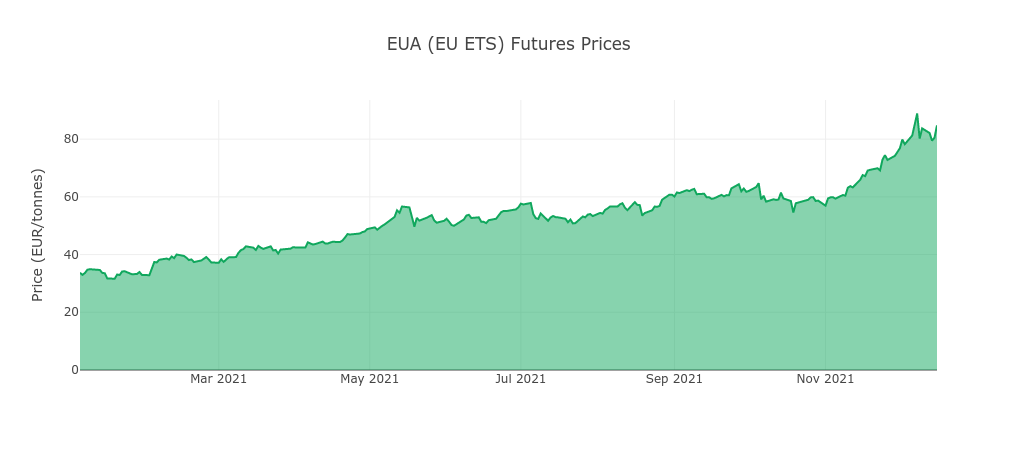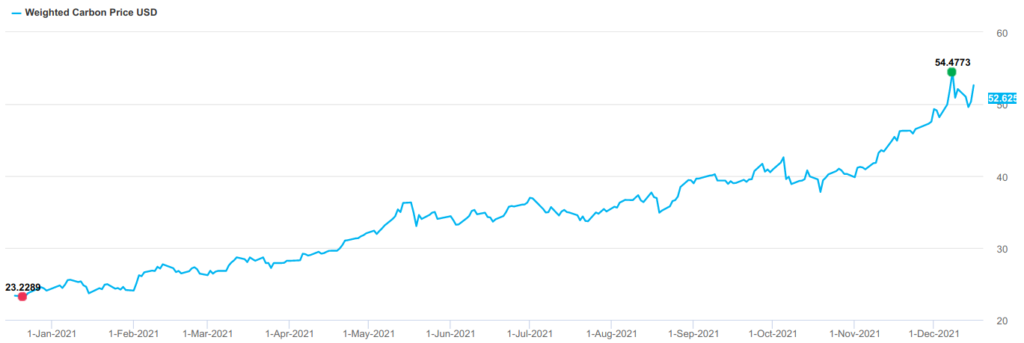
Pricing the ton of carbon is a key matter – more so as an increasing number of companies aim at publicly claiming carbon neutrality.
Let’s at this point remind ourselves what the different carbon-related terms exactly mean, and how each of them is different – and in the due course, add some stringency and clarity to the sea of buzzwords that are currently floating around our social media and business sphere (see source):
Carbon neutral means that any CO2 released into the atmosphere from a company’s activities is balanced by an equivalent amount being removed
[Eds: meaning – with the help offsetting or carbon capture and storage].
Climate positive means that activity goes beyond achieving net-zero carbon emissions to create an environmental benefit by removing additional carbon dioxide from the atmosphere
[Eds: i.e. again, most likely with the help offsetting or carbon capture and storage].
Carbon negative means the same thing as “climate positive.”
Carbon positive is how organisations describe climate positive and carbon negative. It’s mainly a marketing term, and understandably confusing–it is generally better to avoid using this term entirely.
Climate Neutral refers to reducing all GHG to the point of zero while eliminating all other negative environmental impacts that an organisation may cause.
Net-Zero carbon emissions mean that an activity releases net-zero carbon emissions into the atmosphere.
Net-Zero emissions balance the whole amount of greenhouse gas (GHG) released and the amount removed from the atmosphere.
In particular the first term, Carbon neutral, inherently means that – a bit like in the medieval times of Christianity – a company or government is able to pay their way out of any ‘carbon sins’ committed. Formulated more to the point: the carbon problem is ‘solved’ by throwing money at it.
Carbon therefore has a price – and this raises the much discussed question: What is a fair (or better: ‘correct’) price for carbon?
Is it the one set – fairly arbitrary – by the different carbon credit trading schemes? Or should it be the one that breaks down the damages (and insurance claims) caused by climate change on a per-ton-of-carbon base? Or should it be simply a price that is sufficiently high to make it economically interesting for companies to invest in carbon reduction efforts at large scale?
If we take the pricing set by e.g. the European Emission Trading Scheme (E-ETS), the price per carbon ton was at USD10 per ton at relaunch of the scheme in 2021, and was supposed to raised – on a planned schedule – to USD35 by 2025 (Source). And that is just one of numerous ETS systems around. Now, fortunately, in 2021 alone – hence meaning roughly since the actual relaunch of the system – the prices have gone significantly above and beyond the planning, raising to a level of around USD80 as the can be seen in the following graph:

Source: Ember (https://ember-climate.org/data/carbon-price-viewer/)
This development still does not answer the question though:’ What is a fair carbon price’.
To get a view of the global carbon credit market, the IHS has put together the ‘IHS Markit Global Carbon Index’ which is designed to measure the performance of the global carbon credit market from a financial investor’s point of view (i.e. returns), and is based on a range of carbon futures of schemes such as, and indeed including, the EU ETS mentioned above.

Source: IHS Markit (https://indices.ihsmarkit.com/#/Carbonindex)
With all that said, it is a long-time non-secret that most of existing carbon pricing schemes are estimated to be too low (read:useless) when it comes to genuine contribute to prevent climate change (Source).
With this in mind, it is insightful to take note of the difference in the above quoted prices:
USD80 vs USD55.
The disparity is a reflection of the actual trading price of across several indices – and the fact that the price is in global terms still off what is deemed to be the ‘pivotal point’ (around USD100 / ton).
When it comes to damages – read economic impact – of climate change, and that would give a go at a ‘recovery’-type of pricing for carbon, numbers remain few and far between. This said, recent research about ‘vulnerable countries’ in preparation of COP26 suggests that it the damage could be as high as a 64% hit on the GDP. And SwissRe estimates the natural disasters and man-made havoc related to climate created damages and losses for 2021 alone amounting to around 105 Billion USD. Assuming that, according to Reuters, in 2021 the world emitted around 36.4 Gigatons of CO2 (i.e. 36.4 billion metric tons), that would give a damage price of not even 3 dollars of damage per ton of CO2. This obvisouly does not count in losses that for the time being are ‘immaterial’: lives lost, biomes destroyed, animal species newly facing extinction etc. In other words: it is still cheaper to let havoc happen than to pay for it a fair price – as long as all the ‘immaterial’ things are not counted into the equation in a way reflecting their value for the functionality of system as a whole.
What it comes down to is a rather unfortunate reality: Unless irrecoverable aspects such as human lives, the loss of biodiversity and biomes etc are given a (decently high) monetary price, the current economic system is not willing, or able for that matter, to take them appropriately into account.
We are left hence in a rather strange place. One of having to consider a philosophical-ethical question: Is our global capitalistic system genuinely asking us to put a price on things that are fundamental to our survival? And if so – how would that affect precisely the most affected communities that are struggling already in the present to have a fair and just access to these resources?
Or maybe more bluntly: What went wrong in the current system that fundamentally asks us to choose between the devil and the belzebub? Namely, between having to monetarily price natural and societal resources, and a fair, equitable access to these resources specifically for hard hit communities?
The question alone should not be even asked.
And yet it seems that’s what we’re left with given the current time and age.

